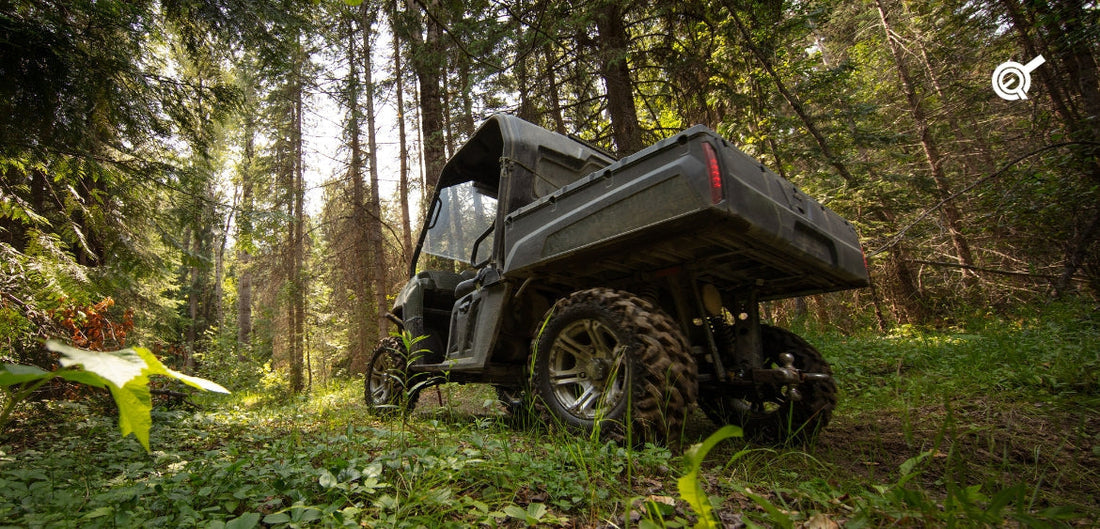Choosing the right actuator for off-road vehicles is essential for maintaining longevity, effectiveness, and optimal performance. Using an incompatible actuator may result in mechanical failures, accelerated wear, and subpar efficiency, all of which can detrimentally affect the vehicle's overall functionality. By recognizing the challenges associated with choosing actuators, both vehicle owners and engineers can make better-informed choices. In this article, we will explore the main challenges and the solutions provided to ensure top-notch performance in extreme off-road conditions.

Error #1: Ignoring the Environment
Off-road vehicles travel across rough terrain, which puts their actuators at risk from dirt, water, and extreme weather conditions. When unprotected, the actuators may be prone to deterioration, malfunction, or even failing sooner than expected.
How to Avoid It:
- Use actuators with high IP ratings to provide weather protection.
- Select materials that resist corrosion, such as anodized aluminum or stainless steel.
- Ensure the actuators have sealed housings to prevent dust and moisture intrusion.
Error #2: Load and Force Requirement Underestimation
Selecting an actuator with insufficient force capacity can lead to mechanical stress, poor performance, and premature failure. If an actuator does not have enough capacity to handle the load, it may fail, resulting in overheating and increased wear. How to Avoid It:
- Clearly define the necessary force requirements, taking into account weight, resistance, and safety margins.
- Consider torque requirements and ensure the actuator delivers adequate power for the application.
- Opt for actuators equipped with overload protection to enhance reliability.

Error #3: Overlooked Factors Influencing Stroke Length and Installation Limitations
Choosing an unsuitable stroke length can lead to inefficiencies in operation, potentially restricting the complete range of movement. Similarly, failure to account for mounting restrictions could lead to space restrictions and a poor fit.
How to Avoid It:
- Evaluate the space available and select actuators that feature compact designs
- Make sure that the actuator mount choices integrate perfectly with the vehicle design.
- Consider actuators with customizable stroke lengths to fit specific application needs.
Error #4: Selecting an Inappropriate Actuation Speed
Actuation speed is a key factor in both determining efficiency and control in off-road vehicles. A high-speed actuator may lack the necessary force, while a slower actuator can compromise responsiveness under continually changing conditions.
How to Avoid It
- Find a balance between speed and power, taking into account the specific requirements of the application.
- Choose actuators that can adjust their speed to ensure precise motion.
- Verify that altering the speed does not affect the actuator's ability to handle its load.

Error #5: Overlooking the Compatibility of Power Supply Actuators
Actuators need a reliable power source to function at their best. Mismatched voltages or insufficient power can lead to unpredictable operation, overheating, or complete breakdown of the devices.
How to Avoid It:
- Verify the compatibility of the actuator's voltage and current ratings with the vehicle's electrical system.
- Adopt effective power management techniques to ensure reliable operation.
- Consider employing actuators with low power consumption to reduce the load on the vehicle's battery.

Error #6: Failing to Consider Durability and Maintenance Needs
Off-road conditions demand actuators with high durability and low maintenance. Ignoring these factors will result in frequent breakdowns and costly repairs.
How to Avoid It:
- Opt for heavy-duty actuators designed for continuous use.
- Look for high-duty cycle ratings to ensure long-lasting performance.
- Select actuators with self-lubricating parts to limit the need for maintenance.
Error #7: Utilization of an Inflexible or Non-Adaptable Actuator
A one-size-fits-all actuator may not meet the unique demands of off-road vehicles. Lack of customization options can lead to inefficient operation and compatibility issues.
How to Avoid It:
- Look for actuators with programmable settings to optimize performance for specific tasks.
- Ensure that smart control systems function harmoniously to enhance automation and efficiency.
- Deal with companies that offer customizable stroke length, mount brackets, as well as other control options.

FAQ
What are the key environmental factors to consider when selecting an actuator for off-road vehicles?
Ensure a high IP rating for dust and water protection, corrosion-resistant materials, and temperature resistance. The actuator should also withstand shock and vibration for durability.
How do I calculate the correct force requirements for an actuator?
Use F = m × g (Force = Mass × Gravity) and add 25-50% extra capacity as a safety margin. Consider friction and mounting angles that may affect the force needed.
Why is stroke length important in actuator selection?
It determines the range of movement and must fit the available space. An incorrect stroke length can cause mechanical strain or space constraints.
How do I ensure the actuator is compatible with my vehicle’s power supply?
Match the actuator’s voltage (12V, 24V, etc.) with your vehicle’s system and check the current draw. Use proper wiring to avoid power issues.
Can I customize an actuator for my specific off-road application?
Yes, you can modify stroke length, mounting brackets, force, speed, and control options. Many manufacturers offer custom actuator solutions for specific needs.
Conclusion
Avoiding these common mistakes ensures that off-road vehicles operate efficiently and reliably. Proper research, accurate load calculations, and consideration of environmental factors are key to selecting the right actuator. Consulting industry experts and choosing rugged, high-performance actuators tailored to off-road applications will help enhance vehicle longevity and efficiency. Check Progressive Automations' website to explore our range of electric linear actuators and reach out to us in case you have any questions regarding the products and applications. We are experts in what we do, and we want you to succeed!
***
Resources:
1. Actuators and Sensors in Road and Off-Road Vehicle System Dynamics - taylorfrancis.com
2. Common Mistakes To Avoid When Choosing Linear Actuators For Your Car - forfordlovers.com
3. 10 Most Common Off-Road Mistakes - club4x4.com.au




